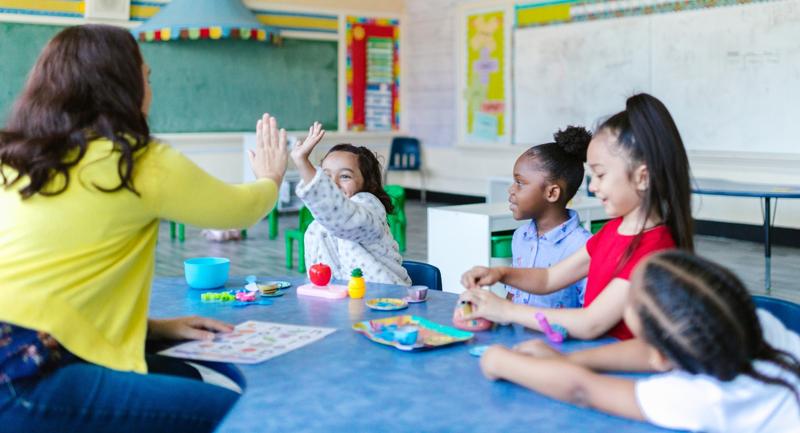Tests and quizzes have the power to turn even the most confident student into a bubble-gut ball of nerves. I (Michael) should know. For some reason, in elementary school, the infamous timed quiz for mathematics was my Achilles heel. Maybe it was the 60-second time limit or the mountain of multiplication problems I was expected to solve. Either way, I usually spent the first 15 seconds fighting through the feeling of needing to use the bathroom and the last 45 wondering if my classmates were just as nervous. No matter how much I tried to shake it, the anxiety was real.
That childhood experience taught me something I’d later recognize as a school counselor—test anxiety isn’t just a student problem. Teachers and administrators are racked with similar stress, hiding in break rooms, squeezing their coffee mugs like giant stress balls, worrying about their test scores. Because standardized test scores are the Yelp reviews for their teaching—the symbolic litmus test of their professional competency.
So how do we even begin to address this cycle of stress? With another assessment (bear with us!). This time, however, the assessment isn’t about test scores or academic performance—it’s about the health of the school culture.
The holiday season creates a unique opportunity for observation—when routines shift and emotions run high, the underlying health of relationships and systems becomes more visible.
As the semester comes to a close, we see the culmination of months of relationships, routines, and results. Students may feel excitement, exhaustion, or even heightened anxiety depending on their home situation. Staff members may experience joy and fatigue. These emotional contrasts serve as mirrors, revealing strengths and vulnerabilities in the ecosystem of the school.
Holiday behaviors often magnify hidden truths. That’s why the midpoint of the school year is an ideal time for reflection. As you navigate the seasonal dynamics in your building, focus your observations on these three areas.
1. Relationships and Interactions
Why it matters: The way people treat each other is the heartbeat of school culture.
What to look for:
Trust between teachers and administrators, respect between staff and students, collaboration among colleagues, and whether families feel welcomed. Positive, supportive relationships indicate a healthy culture, while high conflict or disconnection signals trouble.
How people treat one another under stress. The way students and staff interact midyear shows whether your school’s culture leans toward compassion or compliance.
Who stays engaged, withdraws, or feels left out during seasonal events.
Questions to ask:
Do you authentically check in on your staff? Take time to pause and ask how they are really doing, then actively listen to ensure those who make teaching and learning look easy are supported themselves.
Do you notice the “silent messages” in your school? Tune in to what is not being said—shifts in body language, microexpressions, or observable divisiveness within groups.
2. Shared Beliefs, Values, and Norms
Why it matters: A school’s culture is shaped by what people collectively believe about teaching, learning, and students’ potential.
What to look for:
Whether staff share a commitment to equity and high expectations. Are inclusivity and belonging emphasized, or are compliance and control the dominant norms? The consistency of these shared values (or lack thereof) reveals whether the culture is cohesive or fragmented.
Whose traditions and cultures are represented? Do celebrations feel inclusive or do some students and staff get overlooked?
Questions to ask:
3. Rituals, Routines, and Practices
Why it matters: Culture shows up not just in words but in day-to-day routines and practices.
What to look for:
How successes are celebrated and how discipline and conflict are handled. What traditions, ceremonies, or community rituals define the school experience? These visible practices make the culture tangible and show students and staff “what matters here.”
How disappointment and loss are managed. Loss of a school community member—whether through death, retirement, or transfer to a new school or district—can significantly impact school culture.
Questions to ask:
After reflecting on these three areas, the real work begins: having honest conversations about what you noticed and creating actionable plans for positive change.
The Gift That Lasts All Year
Unlike those anxiety-inducing math quizzes in elementary school, this reflection process is designed to strengthen rather than judge. School culture check-ins are essential for moving toward our ultimate goal—success for all. With this simple practice, the most lasting gift we give students and staff is a culture that makes everyone feel safe, seen, and significant.









